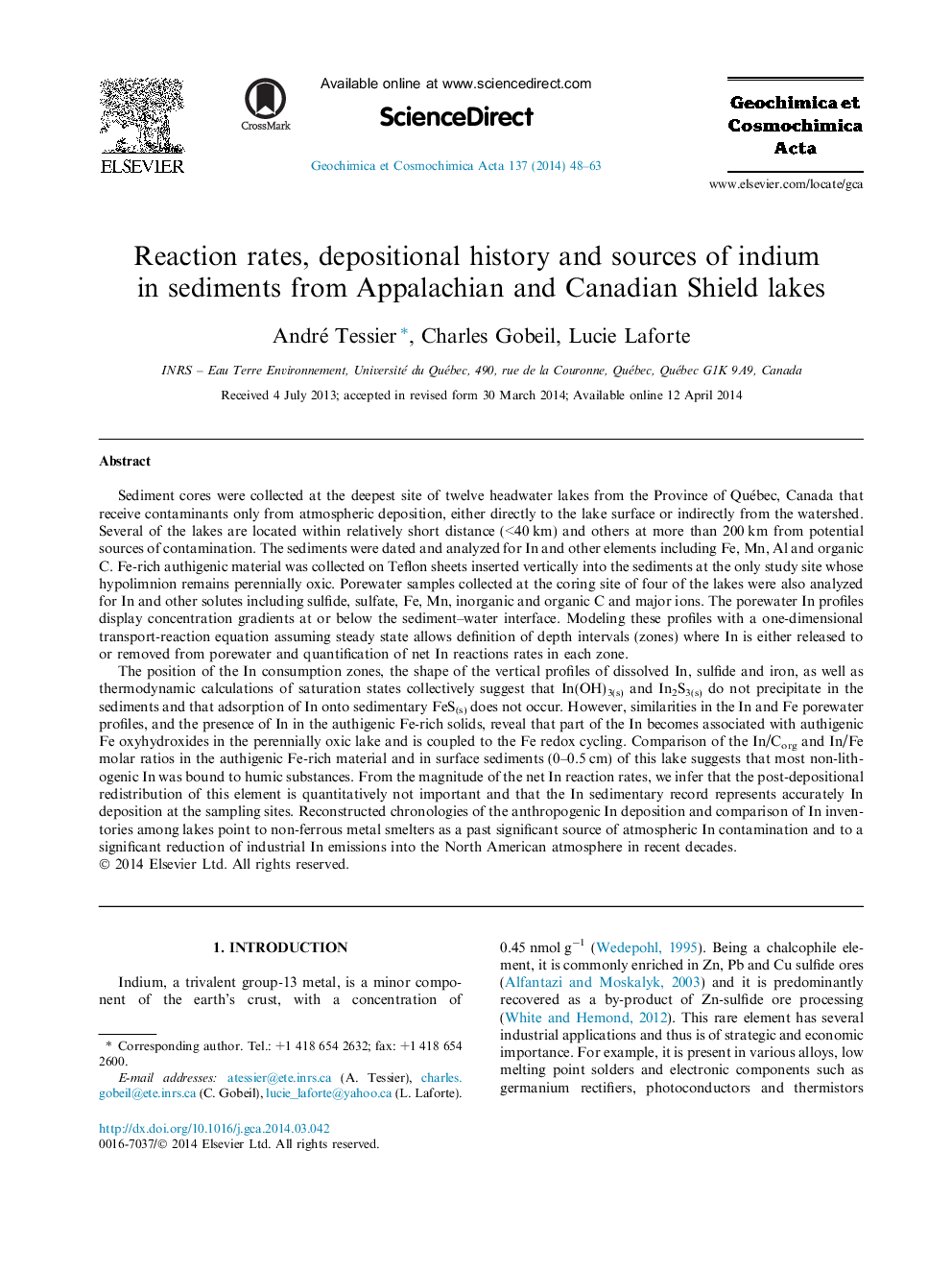| Article ID | Journal | Published Year | Pages | File Type |
|---|---|---|---|---|
| 6438577 | Geochimica et Cosmochimica Acta | 2014 | 16 Pages |
Abstract
The position of the In consumption zones, the shape of the vertical profiles of dissolved In, sulfide and iron, as well as thermodynamic calculations of saturation states collectively suggest that In(OH)3(s) and In2S3(s) do not precipitate in the sediments and that adsorption of In onto sedimentary FeS(s) does not occur. However, similarities in the In and Fe porewater profiles, and the presence of In in the authigenic Fe-rich solids, reveal that part of the In becomes associated with authigenic Fe oxyhydroxides in the perennially oxic lake and is coupled to the Fe redox cycling. Comparison of the In/Corg and In/Fe molar ratios in the authigenic Fe-rich material and in surface sediments (0-0.5Â cm) of this lake suggests that most non-lithogenic In was bound to humic substances. From the magnitude of the net In reaction rates, we infer that the post-depositional redistribution of this element is quantitatively not important and that the In sedimentary record represents accurately In deposition at the sampling sites. Reconstructed chronologies of the anthropogenic In deposition and comparison of In inventories among lakes point to non-ferrous metal smelters as a past significant source of atmospheric In contamination and to a significant reduction of industrial In emissions into the North American atmosphere in recent decades.
Related Topics
Physical Sciences and Engineering
Earth and Planetary Sciences
Geochemistry and Petrology
Authors
André Tessier, Charles Gobeil, Lucie Laforte,
